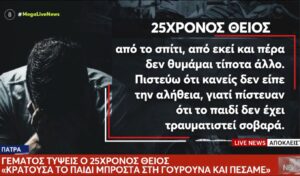The Monument to the Unknown Soldier stands as one of our country’s most important memorial sites, honoring all those who sacrificed themselves for freedom. This sacred monument symbolizes the nation’s eternal gratitude toward the anonymous heroes who gave their lives in wartime struggles. Each inscription carved into the porous stones tells a story of courage and self-sacrifice.
Unknown soldier: the monument’s symbolism
The idea of creating a monument for unknown fallen soldiers has its roots in classical antiquity. Ancient Greek writers, such as Thucydides, Sophocles, Euripides and Chariton referred to similar honorary practices for fallen warriors. The modern Monument to the Unknown Soldier was established by decision of Theodoros Pangalos on March 3, 1926, when he held the position of Minister of Military Affairs. The official unveiling took place on March 25, 1932 by Prime Minister Andreas Michalakopoulos, in the presence of numerous foreign delegations.
The role of the Presidential Guard at the Unknown Soldier
The guardianship of the sacred site was assigned to a special military corps initially called the “Guard of the Monument to the Unknown Soldier.” In 1935, with the return of King George II, the unit was renamed “Royal Guard.” After the democratic transition of 1974, the current name “Presidential Guard” was established, with the evzones guarding the monument on a twenty-four-hour basis.
What the inscriptions and place names at the Unknown Soldier Monument say
The inscriptions carved into the monument’s porous stones constitute a map of modern Greek history. Each place name represents a location where the Greek army fought significant battles, honoring the memory of the fallen.
On the left side of the cenotaph are carved the battles of the First Balkan War. On the porous stones of the steps we read the battlefields of the Second Balkan War and the Asia Minor Campaign. The right side hosts inscriptions from World War I and military operations after the October Revolution of 1917 in Russia. After Liberation in 1944, World War II battlefields were added and later locations from participation in the Korean War.
Recent additions to the monument
In the last thirty years, five new areas have been added to the monument’s inscriptions. In 1994, by parliamentary decision, the name “Cyprus” was carved in honor of the victims of the Turkish invasion of 1974. The most recent addition was made in 2015, when the words “Aegean,” “Ionian,” “Mediterranean” and “Atlantic” were added. These inscriptions honor Greek sailors who fell during wars, as well as the sacrifices of Merchant Marine crews during World War II. The intervention of the foundation “Grove of Greek Maritime Tradition” under the presidency of Admiral Kyriakos Kyriakidis was catalytic for this addition.
The architectural and symbolic dimension
The monument was designed by architect Emmanuel Lazaridis, who won the competition under the pseudonym SCRA. The sculptural decoration was created by Fokion Rok, creating a work that combines simplicity with grandeur. On the wall behind the tomb there is a relief representation of a naked hoplite with helmet and shield. To the left and right of the representation we see phrases from Pericles’ Funeral Oration: “one empty bed is carried prepared for the unknown” and “of illustrious men every land is a tomb.”




